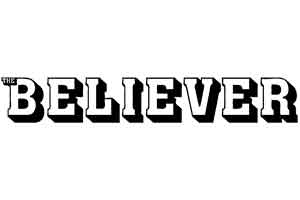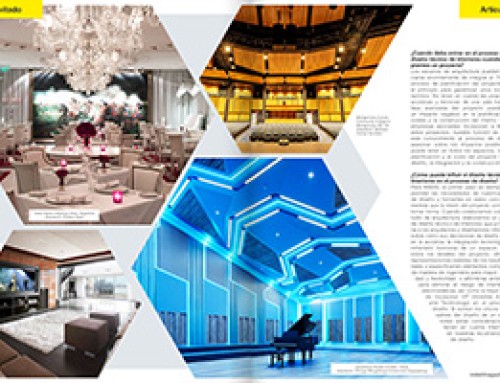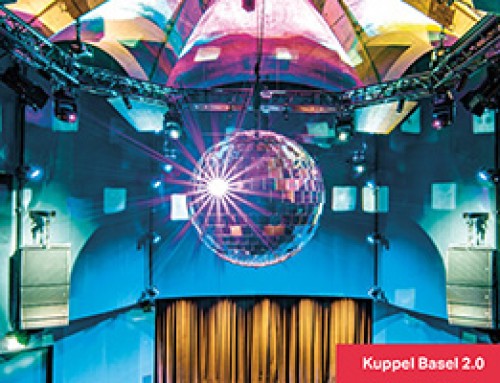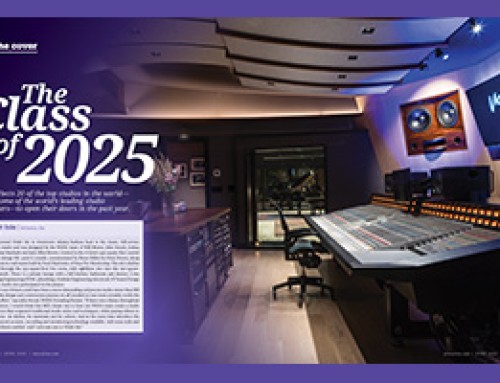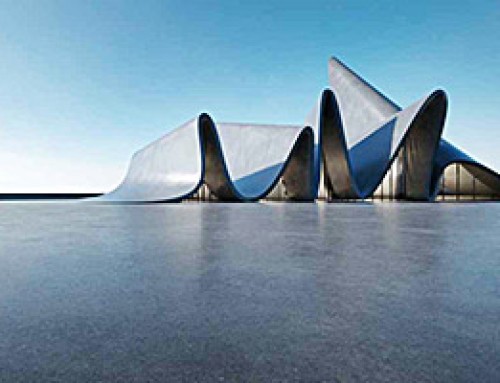A BIOGRAPHY OF JIMI HENDRIX’S ELECTRIC LADY STUDIOS, ITS OWNERSHIP, AND OTHER BLACK MEMORIES
DISCUSSED: A Man of Zero Sentimentality, The Preservation of Psychedelic Sensibilities, Technical Questions for Les Paul, A Common Language, Keith Richards’s Desire for Privacy, Sold Souls, Employees for Hire, The Star-Spangled Banner, A Good Old Boy, Marlboro Reds, Something Ethereal
When I was nineteen or so, Richard Nichols, a man who was more of a father to me than my own father was, invited me to Electric Lady Studios in New York to watch Amiri Baraka record one of his new poems. Richard, who managed the Roots until his death, last July, was a jazz savant, and during his college years was a poetry student of both Amiri Baraka and Sonia Sanchez. Like Richard had in his youth, I had cultivated an interest in all things poetic, black, and avant-garde. So when he called and said that Baraka had agreed to record a poem for the Roots’ album, and that he had already reserved and paid for my Amtrak ticket to New York City, I packed my backpack and headed to the station.
I had been Richard’s “intern” for only a few months, but my internship was a strange one. In the morning I answered the office phone and in the afternoon Richard taught me about old music he loved: Rufus Harley, Rahsaan Roland Kirk, Jimi Hendrix. They were the blueprints, the models to study. Over the years, Richard had developed a quiet philosophy of freedom and self-determination and, with very little money, had somehow mentored and raised an informal village of rappers, singers, and musicians: Jill Scott, Erykah Badu, Mos Def and Talib Kweli, Santigold and Bilal. I wasn’t a musician but I came to Richard a confused kid—a black kid who felt very black but wasn’t particularly interested in the kind of blackness that the local radio stations seemed to be shilling—with no idea of what I wanted to do next. Richard, a man of zero sentimentality, rescued me by allowing me to learn about black music and culture as living histories rather than parts of a storied past. From him I knew that Electric Lady Studios was seemingly the only place in a constantly evolving city and an increasingly digitized recording industry that still somehow preserved the psychedelic sensibilities of its first owner, Hendrix, the god himself.
Jimi Hendrix had initially wanted to turn the two cavernous bottom floors of 52 West Eighth Street into a club, like it had been when he first visited the space. For almost forty years it had been the Village Barn, a novelty western-themed bar, and then, for a brief time in 1968, a nightclub called the Generation Club (you can watch videos of Hendrix sitting on the side of the stage there while Janis Joplin sings). It was Eddie Kramer, Hendrix’s mix engineer, who suggested he found a studio—a place where Hendrix could have some financial and artistic autonomy—rather than a club, which Kramer insisted was a waste of money. Despite being the highest paid musician in the world, by the time Hendrix played Woodstock, in 1969, he was swamped with money problems. He was always the sort of performer who preferred to push boundaries and do the unexpected, and he was spending well into the six figures to record. He complained that crowds wanted to hear only his hits, so the studio was to be a place where Hendrix could have some freedom—something that despite his outwardly freewheeling look, riotous onstage antics, and easy come, easy go attitude, he had very little of. As Les Paul, the guitarist and inventor, recalled in the New York Times, “Musicians know that I’m a night person, so when someone’s got a technical question—how do you hold the guitar pick for this, how do you finger that chord?—they call. Back when Jimi Hendrix opened Electric Lady Studios, he was on the phone all the time; we talked about how to mike a guitar amplifier and where he should place the mike in the studio.”
Hendrix recorded only a handful of songs at Electric Lady before his death, in 1970, including several that appeared on his posthumous album, The Cry of Love, but the list of albums produced at the studio is legend: Stevie Wonder recordedTalking Book there, Led Zeppelin mixed some of Houses of the Holy there, David Bowie did Young Americans, and Patti Smith decided early on that Horses could be made nowhere else.
Tucked into the whirl of Greenwich Village, Electric Lady could have become a priceless real-estate curio. Instead it has continued to be a place where great American music is born. Unlike many historical sites in Manhattan, Electric Lady Studios has a strict but logical door policy: no tours, no strangers. For the most part, the only people admitted are those who have come to make music—the artists and their retinues.
Maybe that’s why it’s difficult not to feel sentimental, blessed even, when one gets a chance to go inside. There is something about Electric Lady that feels sacrosanct. From the moment the discreet, glass-paned door buzzes and lets you through, disbelief sets in and does not fade as you walk down the bordello-red staircase. These are the steps where a very shy Jimi Hendrix, only weeks away from his death, told a very young Patti Smith his never-to-be realized plans for a universal love orchestra, an orchestra where, as Smith wrote in her memoir, “musicians from all over the world in Woodstock… would sit in a field in a circle and play and play. It didn’t matter what key or tempo or what melody, they would keep on playing through their discordance until they found a common language. Eventually they would record this abstract universal language of music in his studio.”
When I first went to Electric Lady, ten years ago, Richard had booked the oval-shaped Studio A for Baraka to record in, and among the things I remember now is the way, late in the night, the red lights made the room gleam—as if the three-story building were a collection of bedouin tents set into the bow of a very fine, Jules Verne–built boat. There are no straight walls on the first floor of Electric Lady. Most of the studio’s rooms are lit by antique lamps and overhead mood lights that change color and make light shows against the white walls. Now a leather Eames recliner sits in the lobby and, next to it, a wooden record cabinet containing records from the studio’s most recent clients: Kanye West, Lana Del Rey, Daft Punk. There are Moroccan and Persian carpets and objets d’art throughout the building, such as a working 8-track with Ray Charles and Dolly Parton tapes that the current studio manager, Lee Foster, found and painted scarlet. There is a tiny hole in the door of an upstairs bathroom that Keith Richards cut for his microphone cord, so he could record his guitar solos in private. In a hallway there is a framed picture of the old Village Barn that Patti Smith gifted to the studio. In Studio B, the control board is caped in soft aubergine velvet. Another bathroom, painted a deep mauve, is papered with Barbra Streisand records and Polaroids of U2 hamming it up. And all along the walls of the first floor there are hundred-foot-long murals, painted in teal, pink, and purple, of astromen and -women trapped inside cosmic embryos: images, the artist Lance Jost recently told me, that are intended to paint the viewer into a spacecraft that is “hurtling through time and space.” As Erykah Badu put it, having pulled over her tour bus so that we could talk, “The artwork puts you automatically in Jimi Hendrix’s world… You don’t know what time it is, you don’t know what year it is, you’re just in a warp, in a wormhole or a vortex. There were many times that I would sleep there for days and didn’t see the outside world. I would take a sponge bath in the bathroom.But I didn’t mind that, because the mural in the bathroom makes me feel like I’m going into another part of myself. And just to see those people painted on those walls—those people are living still! And breathing through those walls. They are characters who are frozen in one position for the rest of time, who have millions of stories, depending on who lays their eyes on them. And those stories touch all our senses, and they have contributed to many of our songs, I’m sure.”
It’s easy to use words like vibe and surreal to describe Electric Lady, but it is almost impossible to understand the brave new world Hendrix was trying to forge with his studio if one doesn’t know that, in 1968, the idea of a studio owned by an artist—and one that had been built to allow artists to sit in the control room—was almost unheard of. Studios operated for the most part under the ironfisted grip of record companies. Engineers of that era were largely technicians, so much so that they often wore lab coats and cut their mixes in sterile, scientific environments. “There was a real boundary line between one side of the glass and the other, so Jimi’s idea was that it would be a safe haven for artists,” the Electric Lady’s architect, John Storyk, told me last summer.
Another thing that made Electric Lady particularly unique was that it was owned by a black artist during a moment when the right to creative autonomy was all but impossible for black musicians, who had little recourse for taking control of their own production or ownership, especially in the courts. This sort of exploitation was especially true for early blues musicians, the artists that Hendrix most admired as a young man—men and women who would literally sell their souls to play the music they loved.
Their lack of rights, though, didn’t prevent these artists from achieving stardom and making money from the strange blues music they had infinite inspiration for. In 1975, Muddy Waters told People magazine, “There’s enough blues to go around. Why, even with the Cream or Eric Clapton I hear sounds I heard as a little bitty boy that I don’t own or have any rights to. The kids have been influenced by me, and that makes an old man feel good.” Humph. In 2013, Mick Jagger was estimated to be worth a cool $300 million. Eric Clapton came in at $245 million. These are the artists now considered to be the moneyed veterans of rock and roll, but they are also the progeny of the blues recorded at Chess Records, a Chicago-based label that despite being founded by two white brothers, Phil and Leonard Chess, was the home of black music in the ’50s. Without Chess Records and its artists—Bo Diddley, Willie Dixon, Chuck Berry, Howlin’ Wolf, Muddy Waters—there would be no Rolling Stones, no Led Zeppelin, no Eric Clapton and Cream, no Bob Dylan, and definitely no Hendrix. Chess Records put out Ike Turner’s Rocket 88, a record that laid the foundation for rock and roll, and it sold the nickel-and-dimed blues that many of its artists had actually lived. It also signed many of them on with employee-for-hire contracts, contractual arrangements that music critic David Sanjek said denied artists ownership of their material and “systematically undercut [their] royalties.” Despite claiming that there were no hard feelings, one year after his interview with People, Waters sued the Chess brothers and a settlement was reached out of court. In defense of his father and uncle, Marshall Chess would later try to justify the turn of events by saying, “We were dealing with blues artists… 80 percent of them were drinking. There was a lot of yelling, a lot of calling people ‘motherfucker,’ and fighting. Blues artists, often you could give them $2,000 on Friday and they’d be broke by Monday. Then they’d come in and say, ‘You fucked me—where’s my money?’ You couldn’t be an angel and run Chess records in the ghetto in Chicago.”
Rock and roll became such a lucrative business after the late ’60s that it’s easy to forget that, much like the red dust of the Delta and the hard times they knew all too well in the Southside of Chicago, for black bluesmen and blueswomen the music industry was the devil’s jam, a highway of broken hearts, a jungle of no good. Nowhere is Hendrix more firmly ensconced in the black blues tradition than in the contracts he signed, which gave 40 percent of his gross income to his manager, Mike Jeffery, after he moved to New York and started to gig in the Village. Jeffery also got him to agree to receive just 3 percent of whatever his records sold, a sum Hendrix had to split with his two bandmates, Mitch Mitchell and Noel Redding. Later, Jeffery—who liked to tell people that he was a member of MI5 during the war in Europe, and had ridden in a chauffeured limo with bulletproof glass that had armaments hidden within it, and that he was licensed to kill—would ask for a 30 percent commission on Hendrix’s cut. This arrangement forced Hendrix to tour and record at a panic pace.
It’s often said that Hendrix is a symbol of racelessness and social harmony, but race is often about what your options are, and what they are not. In many ways, Jimi Hendrix was never blacker than during the years he was being ostracized for playing “white music.” In his exhaustive biography, Charles Cross claims that in the last year of his life, a burned-out Hendrix told a friend, “They are killing me.” It was apparent to many close to Hendrix that not only was Electric Lady important to him, it had become his only hope of security.
What is most incredible, to me, about Hendrix’s ascent and decline is how rapid and culturally defining it was for someone who lived for such a brief time. Not too long before Hendrix went vanguard and donned a British brigadier’s jacket, stopped conking his hair and curled it into a wispy Afro, thereby reinventing (but never quite losing) his painfully shy, poor-boy past to become a peacock of a performer, a god of rock, he was just a nameless, guitar-playing journeyman on the touring circuit once offensively known as “the Chitlin Circuit.” Hendrix would travel the Deep South, playing behind his childhood heroes. He also played for acts that were embarrassing and gimmicky, as a YouTube clip of him backing the duo Buddy and Stacey shows. Working behind them, Hendrix appeared for the first time on television on a Nashville-based R&B program called Night Train. Like so many other black musicians, he was a skilled laborer in his craft, but his ability to be flamboyant and vanguard mattered little while he was touring the circuit, and ultimately it served only to get him fired from Little Richard’s band.
Still, the circuit was where he learned the showmanship thatRolling Stone later would mock as being that of a “psychedelic superspade.” And, as songs like “Bold as Love” suggest, it is impossible to believe that he didn’t also learn the most technical, uneducable tricks of the trade from these acts. Before Hendrix claimed the title, Ike Turner was a reigning master of the vibrato, and Hendrix’s playing and showmanship have traces of Turner, a violent man whose fists have all but erased what he could do with his fingers when they strummed a guitar. Hendrix’s performed wildness was borrowed from Little Richard and Chuck Berry, his quickness from Bo Diddley, and (from the man he might have admired most of all) his smoothness from Curtis Mayfield. These were the people on the circuit who would lay the foundation for much of what Hendrix would later aspire to do—and would also serve as a template for what not to do when he became the frontman of his own group.
Using these musicians as teachers, Hendrix seemed to preternaturally understand the good and bad that were at work in black music at the time—and that black music, black musicians, and black songs were an estuarine community. The good: how they worked together, traded band members and backing acts, covered each other, and jested each other into giftedness with love. The bad: that this tended to mean they were indeed on a circuit, an ill loop where despite having access to millions of listeners, it was easy to get pigeonholed and typecast and stuck.
As a teen growing up in Seattle, Jimi listened to Chuck Berry and Bo Diddley, but he also listened to around-the-way garage rock, white bands like the Fabulous Wailers and the Kingsmen. He knew early on that he wanted his guitar to reach ranges and zeniths unseen. And Hendrix did of course achieve that new sound, while also managing to become the heir apparent, if not the ballast, of what he called “a today’s type of blues”: a self-improving, shape-shifting, genre-bending American guitar tradition that only a rare few black artists have carried into the twenty-first century.
And I think this is what makes Jimi Hendrix such a popular figure for canonization, besides his sheer genius: we also admire just how many qualities he was able to let coexist in his playing, his style, and his way of being. He seemed to realize early on that you can take it all with you: the blues; his love of Bob Dylan, Arthur Lee, the Aleem twins of Harlem, and Curtis Mayfield; his enduring respect for the armed forces as a former paratrooper; the help of Linda Keith, the British Jewish model who got Hendrix his first record deal; his proud but difficult father; his adoring but absent mother; his own heady mix of drugs; and his spirituality. Like Whitman had before him, Hendrix sang a strange song of himself, a self that was not raceless or without flaws, but whose greatest muse was the country of his birth. Who else but Jimi Hendrix could make “The Star-Spangled Banner” sound so true, so blended, so inventive, so broken, so borrowed?
It is no wonder, then, that Jimi Hendrix still seems to loom as an otherworldly, unbelievable, but eternal figure. When I asked Patti Smith what drew her to write about Jimi when she was a journalist in the ’60s, she told me that
he was everything that you would want from your rock-and-roll star and also, more than that, from a cultural voice of your time. We had a lot of great cultural voices, but he encompassed everything. He was beautiful, he was revolutionary, he was bold; he was also a bit shy and reticent. So he had a mix of both fearlessness and modesty—his clothing, his mannerisms, his playing. For a person like me, who loved [John] Coltrane and Albert Ayler, he satisfied that desire for improvisation and breaking boundaries. What Jimi Hendrix did on the electric guitar, no one was doing—at least, no one we knew was doing. He broke first with these new chords, new ways of approaching the electric guitar. He was an electric performer. And he had a great smile. From a girl’s point of view, he was everything you could ask for. He was a beautiful poet, and he also had a philosophical outlook that epitomized that generation. When he said “peace and love” he didn’t say it lightly. He really believed that the language of peace and love and harmony and equality could be found through music. He had it all. And he was restless, so you knew he would continue to evolve, and the ideas he expressed to me about creating a universal language through music were so hopeful.
It’s a shame that Lee Foster, Electric Lady’s current minority owner and studio manager, a proud-to-be-it good old boy from Tennessee with a slight accent and a compact build (as if he were coiled with energy from his evangelical intensity about the studio), came along thirty years after Hendrix passed away. There is no one alive who is more protective of or enthralled by Electric Lady Studios. Foster’s desk sits surrounded by a series of posters for his live performance series, the Heartbreaker Banquet, and the RIAA certification for Led Zeppelin’s Houses of the Holy in one of the upstairs rooms that was built when he took over. There Foster confessed to me with slight shame but also a lover-like pride, “The studio is the lady and I’m her tramp.” When I ask him if his office is Michael Jeffery’s old office, he frowns at the suggestion and shakes his head silently, pointing to a room next door that they try not to use for much. While Foster clearly loves Hendrix (he tells me more than once that when it comes to making a decision about the studio’s future he often asks himself, What would Jimi do?), it is also clear that his deepest relationship is with the building itself. Nothing seems to give him more pleasure than walking around discussing the vintage Neve hand-wired analog mixing console and the renovations of the other four rooms. Foster hunted down monitors and mics from the late ’60s, the era that not only gave birth to the Electric Lady but also was the period that Foster and many of the studio’s clients think of as being the golden age of record-making. These machines are what produce Electric Lady’s warm, distinctly analog, classic sound.
Foster arrived in New York City from a tiny town in Tennessee shortly after 9/11. He had heard of Electric Lady through an acquaintance, and he called the studio asking for an internship more times than he can remember. They told him he could come by and intern for one day, and if they liked him he could stay, if they didn’t that was it. They liked him, but they couldn’t pay him much. Terrified, broke, and sleeping on other’s people couches, Foster soon found himself bunking at the studio. To him, it was the only known in a city full of unknowns. He recalls learning very soon after his arrival that although Jimi Hendrix’s idea of creating a studio not beholden to an industry was a brilliant one on paper, there was one oversight in his plan: Hendrix never purchased the building. This meant there were many years when Electric Lady was barely able to keep its lights on. After all, Eighth Street in Manhattan has changed upon entering the twenty-first century—no longer the home of shoe stores and Yiddish-speaking shopkeepers, it is a street where even the famously recession-proof Gray’s Papaya has shuttered and closed.
Back in the early 2000s, when the studio was in the middle of yet another slump—the rent was high, and business was slow—Electric Lady was suddenly lucky enough to become the nexus of Rich Nichols’s next vision. Nichols installed the Roots there to record, and soon other young black musical vanguards followed suit: Erykah Badu, J Dilla, Common, and D’Angelo. Their residency imbued the studio with some much-needed cash, and their energy helped it to survive. But when the Roots left, Foster recalls, there were days when the studio sat empty, and the owners told him he could have the job of studio manager only if he could figure out a way to make it work.
It was then that Foster’s scrappy country childhood came into use. He hired an army of interns, people who loved music but also knew how to install drywall and do light construction and didn’t mind swabbing the deck of a studio whose glory seemed to be quickly fading. Foster knew that the studio wasn’t up to par for world-class musicians, so he started to book live shows in order to capitalize on the living monument’s cool. Within five years, the studio was turning a slight profit. But it still needed an injection of cash to make its equipment and rooms technically sound. Foster knew that he had only come up with a temporary solution, and he remained under pressure to find a potential buyer, someone he could broker the sale of the studio to who truly wanted to protect its best interest. So he approached John Storyk and asked him to keep an eye out. That was when Storyk, the man who originally helped create the studio, stepped in and introduced Lee Foster to the man who is now his mentor, and the studio’s majority owner, Keith Stoltz. After his first dinner with Foster, Stoltz decided not only to help save the studio from impending silence but also to “invest in Lee” as a young businessman. Now they have a management company with plans to revive an Electric Lady Studios live-performance series and start a record label. Foster thinks of his clients as a kind of family, and he’s cagey and intense about respecting their privacy. In turn, every single person I spoke with never failed to say that Lee Foster seems to live and breathe Electric Lady—followed closely by the Marlboro Reds he smokes constantly.
Not too long ago, in Studio A, Foster asked me if I wanted to see the river. I did, and with the help of four almost-silent studio assistants, he rolled Hendrix-era Marshall amps and moved monitors around the large room, pulling off the thick blankets meant to quiet the sound and throwing them in a heap, in order to reach the heavy cellar door. It took all four assistants to lift it. Foster leaned over to tell me he had heard that Jimi Hendrix wanted to stick a microphone into the water and record. Then he said, “I’ve also heard that the Indians here called it the Devil’s Water, but I’ll have to see if that’s true.” Before I could respond with questions, Foster was sitting in a rocky hole in the earth, and right below his sooty cowboy boots was indeed water—rushing clear and steady. It was the fabled Minetta Creek, a babbling river older than the city itself, which evidently outlasted the designs of the Commissioners’ Plan of 1811. I could hear the water—not the subway, not the music, not the sump pumps that work overtime to keep it low—loudly. “So this is it,” Foster said, grinning, arms crossed. “This is it. It has a river. Can you even believe it?”
In 2011, Richard Nichols was diagnosed with a rare form of leukemia. Without much comment, our daily phone conversations that had spanned hours suddenly moved to Gchat. His spleen was swollen, and often it pained him to talk. I didn’t object. I couldn’t shake the sense that I wanted to have a record of him. As he slipped away, I began looking for places where I could find memories of him. His bold. His brave. His free.
“Rich,” I wrote to him last summer, “I need to visit Electric Lady again.”
“Man, how many times do I have to tell you that you should just call Lee?” he wrote back.
The first or second time Lee Foster and I spoke, we fought bitterly. He didn’t want me to write yet another story about Electric Lady’s past. Although I did not tell him, I was looking for remnants of Jimi and Rich, and to me it was a bitter pill that one of the few black-owned studios in the United States could no longer claim that distinct credit. As Eddie Kramer, the mix engineer, once said of Hendrix, “He was very proud of that studio. Being a black man of his stature, making a lot of money and owning your own studio in New York City, that was the pinnacle of success for him.” Who the hell was this new jack from the mountains, I thought as Foster and I talked.
But after half an hour or so, Lee finally told me what I hadn’t known about the building’s lease. He also told me that after Jeffery’s death, in 1973, the studio was put under the charge of a court-appointed official who threw Led Zeppelin out for smoking pot during a session and blocked Stevie Wonder’s bid for ownership. “Places like the Electric Lady are so priceless in that process of creation that they cannot afford to just live in the past,” Foster said. “The past doesn’t pay the rent. Understand? This is about preservation, and also about what comes next.” Yes, I very much understood. And I began to realize begrudgingly that Electric Lady was actually in good hands.
In the weeks to come, while Rich was in the hospital, I spent long afternoons wandering around the building with Foster, talking about his friendship with Rich, Jimi’s music, our Southern grandparents, and how much we both missed fried okra. It was during one of those long afternoons, when I was worrying about what time immemorial meant while looking at those forty-year-old alien murals along the walls, that I began to see that Electric Lady had actually come close to doing what Jimi Hendrix had told Patti Smith he wanted most of all to do before he died: to record the language of peace, the sound of exchange and commonality that often looks like a tangle of instruments and voices.
So. The last time I saw Richard, the biggest man I had ever known was smaller than I have been in years, sedated in his hospital bed, bald, without his long dreadlocks. I was there to say goodbye. But I could not find the words. I stood there in my hospital gown and mask, wanting one last conversation, the chance to ask him if he remembered that night in Electric Lady, many years ago, when we had sat in Studio A, watching Amiri Baraka rap. The lights had cast red but the room felt frigid. On that night I kept joking to the tech that Jimi was with us. And he said that many people say they feel Jimi’s presence in the studio. Lights are said to flicker, and Joe Strummer reportedly swore that a phantom guitar track appeared on a track the Clash were recording for Sandinista! I remember wanting something ethereal to be felt among us, to give us goose bumps from the connection. Over the drumming, in the cold, Baraka, who is now also gone, rapped, keeping time with the beat by tapping his cane on the floor. Rapping fast and hard, speaking his way through air. I was young and I didn’t know about death then. How it steals away forevers and leaves an emptiness that feels impossible. I felt like the only thing missing was Hendrix, and I wanted to will him back to see what he had made. But maybe the final wonder of Electric Lady is that, like the impossible river that still runs through it, it is alive and free in a way that makes one feel like Jimi is still there, that they are all there, finally at peace watching those gorgeous moments when music is made like magic, unfolding in a squat brown building most people walk by and do not even notice.
Rachel Kaadzi Ghansah’s essays and criticism have appeared in the Paris Review,Bookforum, Transition, and Rolling Stone. Her profile of Dave Chappelle for theBeliever, “If He Hollers Let Him Go,” was a finalist for the 2014 National Magazine Award. She is a contributing writer for the New York Times magazine. And she lives in New York City.

